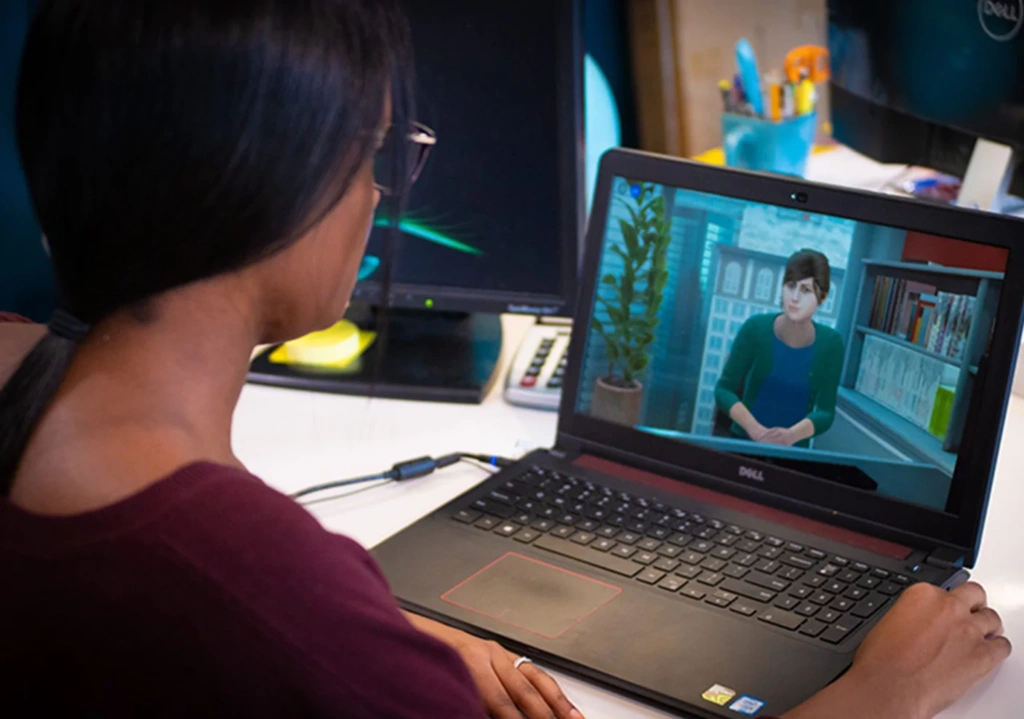In today’s fast-moving workplace, continuous skill development isn’t a nice-to-have—it’s essential. Yet too often, traditional training falls short, leaving employees unprepared for the real-world complexity they face every day.
That’s why forward-thinking organizations are turning to practice-based learning—a science-backed approach that helps people build lasting skills through real-world experience.
Why Practice-Based Learning Works
At its core, practice-based learning is about learning by doing. It’s immersive. It’s intentional. And it works.
Instead of passively consuming information, employees engage in lifelike scenarios—building confidence, improving decision-making, and developing the critical interpersonal skills today’s workplace demands.
Here’s what sets it apart:
- A Risk-Free Space to Practice
Mistakes are how we grow, but in high-stakes conversations, they are costly. Practice-based learning provides a safe environment to experiment, course-correct, and improve without real-world consequences. - Deeper Knowledge Retention
People don’t remember what they read; they remember what they experience. Practice-based learning activates knowledge in context, making it easier to apply on the job. - Confidence in Critical Moments
Whether it’s navigating a tough conversation or leading through change, repeated practice boosts readiness. Repeated exposure in simulated scenarios helps develop capabilities like empathy, adaptability, and executive presence. - Future-Proofs the Workforce
As AI transforms technical roles, human skills—communication, leadership, emotional intelligence—become even more valuable. Practice-based learning ensures your workforce is equipped for what’s next.
What Happens Without Practice?
Here’s the reality:
- 32% of customers will leave after one bad experience.
- 70% of adverse patient safety events stem from communication breakdowns.
- 57% of employees cite poor management as a reason for quitting.
When employees aren’t given a focused environment to develop new skills, they’re forced to learn on the job—with your brand, customers, and outcomes on the line.
The Science Behind Virtual Practice-Based Learning
The research is clear: virtual practice environments work.
- 99% of studies confirm the effectiveness of virtual training.
- Participants rate avatar-based simulations as more realistic and more helpful than human role-play.
Here’s why it works so well:
- Singular Focus
VR eliminates distractions and performance anxiety, helping learners focus on the task at hand. - Immersive Simulation
Our brains process VR experiences like real ones. That means deeper emotional engagement, stronger memory encoding, and better behavior change. - Personalized and Precise
With virtual simulations, training can be tailored at scale—delivering consistency without sacrificing relevance or nuance.
Real Results, Real Impact
Organizations using Mursion’s virtual practice platform are already seeing results:
Best Western, a global hotel group, partners with Mursion to design and deliver a program focusing on customer experience. Best Western’s goal was to “lead the industry in superior customer care,” and Mursion provided the opportunity for Best Western to integrate practice sessions into its training program for frontline employees.
Hotels that practiced with Mursion experienced the highest short-term gains in customer satisfaction that Best Western has ever measured in such a short period of time. The average cost to design and deliver the simulations driving these extraordinary outcomes was less than $165 per hotel, and participating hotels experienced an average of 2-5% gains in post-stay guest satisfaction survey ratings compared to flat rates for non-participating hotels.
As a global telecommunications company, Ericsson’s commitment to innovation does not end with its product and services portfolio. Their commitment extends to the company culture and employee experience and development programs. Ericsson partners with Mursion to upskill leaders in high-stakes interpersonal communication.
Ericsson leaders reported a 2x increase in perspective-taking after just a few sessions, and believe that the skills they practiced were directly applicable to their day-to-day work. By implementing practice, Ericsson realized tangible improvements in employee engagement.
The Bottom Line
Practice-based learning isn’t a trend—it’s a strategic shift.
For enterprise leaders, the opportunity is clear:
Equip your people to practice, receive feedback, and grow—in a space designed for learning, not risk.
Because when your people are ready, your business performs.Ready to discover how practice can transform your organization? Request a demo of Mursion today.

